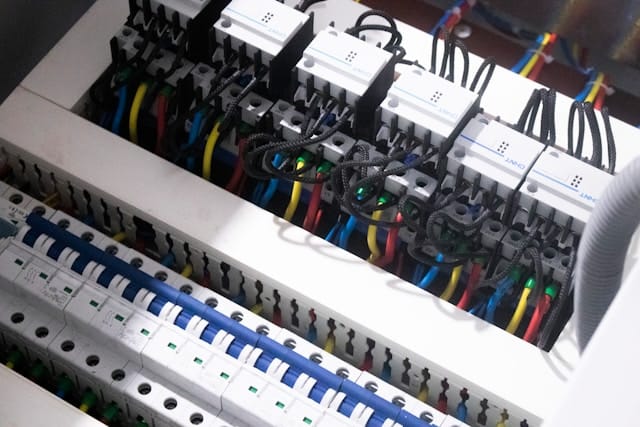Updating your home’s electrical system is a big job that needs careful planning, know-how, and a focus on safety. You might want to upgrade old wiring, add new outlets, or get ready for a big remodel. No matter what, it’s crucial to handle electrical work to keep your home and family safe. In 2025, as smart home tech and energy savings become more common, more homeowners are tackling electrical updates—but safety is a must. Here’s a full guide to help you feel confident as you work through this process.
Check Out Your Current Electrical Setup
Before you start any electrical remodel, you should check the state and capacity of your current system. Houses built before the 1980s might have old wiring that doesn’t meet today’s safety rules or work well with modern appliances. Watch out for warning signs like lights that flicker, circuit breakers that trip often, or outlets that feel warm. A qualified electrician can do a full check to spot possible dangers and figure out if your panel needs an upgrade to handle more power.
Think About What You Need Now and Later
A good electrical makeover does more than fix broken stuff—it plans for your home’s future use. Consider your way of life and how your power needs might change. Are you setting up a home workspace putting in EV chargers, or adding smart home tech? Mapping your current and future needs will help your remodel support both function and safety. Now’s also the time to think about saving energy with upgrades like LED lights, motion detectors, and smart thermostats.
Follow Local Codes and Permit Requirements
Electrical work has strict regulations for a good reason—it poses serious safety risks if not done right. Each town has its own building rules and permit needs, which aim to make sure electrical systems are put in and correctly. Before you start your project, talk to your local building office to find out what permits you need and if they’ll check your work. Getting a licensed electrician who knows the local rules can help you avoid big mistakes and make sure your remodel passes the checks.
Use the Right Materials and Techniques
Choosing the appropriate materials is essential for both the performance and safety of your electrical upgrade. This involves choosing the right thickness of wire, circuit breakers, outlets, and switches for each use. As an example, kitchens and bathrooms often need GFCI (Ground Fault Circuit Interrupter) outlets to guard against shocks from moisture. You should make all connections using the correct methods, like proper wire joining and grounding. If your plan has an impact on electrical remodels in several rooms or across different floors of your house, being consistent and paying close attention to every detail are essential to keep the system working well.
Know When to Call a Professional
Though some homeowners feel confident tackling simple electrical jobs like swapping out a light fixture or putting in a dimmer switch, they should leave trickier projects to the experts. Messing with electricity comes with risks such as fires, shocks, and breaking building codes. A licensed electrician brings the expertise, proper tools, and professional training needed to complete the job safely and correctly. They can also help solve unexpected problems, make sure everything follows the rules, and give you peace of mind that your house is safe.
Conclusion
Giving your home’s electrical system a makeover is a smart way to boost safety, make things work better, and get ready for the future. To make sure your project goes well and stays safe, you need to check out what you’ve got now, plan, follow local rules, use the right stuff, and know when to call in the pros. Don’t try to take shortcuts with electrical work—doing it right will pay off big time. You’ll end up with a system that’s reliable, uses energy, and gives you peace of mind for a long time to come.

